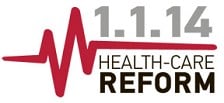What businesses need to know now to prepare for health reform

On Jan. 1, 2014, a host of new rules, mandates, taxes and incentives under the Patient Protection and Affordable Care Act will go into effect, dramatically shifting the landscape of the employer-provided health insurance model that’s been in place for decades. The mass of changes on the horizon can be overwhelming. I had the opportunity to sit down with several health-care and employment experts in an effort to sort through the mess. What follows is a detailed look at the biggest things Central Iowa businesses need to be doing to prepare, decisions they should be considering and a look at the timeline of the law’s mandates.
– Joe Gardyasz
My business has …

Should I be planning?
Smaller employers won’t have to choose between providing insurance or paying penalties, but they are more likely to experience volatility in premiums than large groups due to changes in the law related to how insurers are allowed to price policies based on risk factors such as age and health status.
Rather than wielding penalties as a stick, the government has offered a carrot of tax credits to small businesses that provide coverage. However, relatively few companies have applied for the credits, and many that have applied don’t qualify. Steve Gooding, president of Reynolds & Reynolds Inc. insurance brokers in Des Moines, said that of about 200 clients his firm has reviewed for possible eligibility for the credits, he couldn’t think of one that has qualified.
The bottom line for small employers: Keep reading. There are impacts and decisions you will be faced with that our experts address.
50 or more full-time employees:
Get ready for the play-or-pay decision
Larger companies, those with more than 50 full-time-equivalent employees, face a significant “play-or-pay” decision: whether to provide health coverage or pay financial penalties beginning in 2014. For some businesses, the new law presents the opportunity to quit offering health-care coverage. For other companies, it may reaffirm the value of health insurance as an important employee benefit and provide them with a competitive advantage against businesses that drop coverage.
Beginning in January 2014, the law requires all adults to purchase health coverage or face paying a fine on their individual income tax returns, a mandate that could make employer-provided coverage a more valuable benefit. Employees may be eligible to purchase health insurance through online exchanges operated either by the state or the federal government, as well as potentially qualify for government subsidies to help them afford to purchase individual health coverage.
These provisions, along with many other mandates, will put even the most seasoned benefits advisers and their clients in uncharted waters for the next couple of years.
Should businesses just pay the penalty?

“Some of the employers have looked at it as, ‘Well, I’d be a fool not to just pay the penalty,’ based on what their costs are today,” he said. “Some employers can look at it as an economic opportunity for their organization, and still be complying with the current-day legislative rules in regard to health-care delivery.”
In other words, as John Hovey, president of Focus OneSource, a West Des Moines human resources, accounting and payroll outsourcing firm, noted, “there’s really nothing in the law that says employers have to provide health-care coverage.”

Mike Teachout, vice president of Focus OneSource, said it has been impossible to provide a definite strategy for employers because there are still too many unknowns. At this point, he could make a convincing argument for either strategy. “Clearly, you have to be able to look an employer in the eye and say, ‘I don’t know what direction you want to go, but here are the options and the financial impacts and how it’s going to affect your employees,’” he said.
Gooding said he thinks the majority of employers he works with will continue to view the employer-based insurance system as the model for providing coverage in Iowa.

“However, unless something is done with that rate of health insurance cost growth, that’s going to be a conversation that more and more people are going to have as time goes on,” Reames said.
What coverage changes can businesses with fewer than 50 employees expect?

Though small groups won’t be subject to penalties, they will face a greater burden than large groups in regard to coverage requirements, said Valerie Snyder-Rivera, who has overall responsibility for Wellmark Blue Cross and Blue Shield’s implementation of the Affordable Care Act.
Standardization of plan designs:
Unlike large groups, groups of fewer than 50 employees that choose to provide insurance will be required to provide coverage for “essential health benefits,” as well as meet the “metallic tier” standards of bronze-, silver-, gold- or platinum-level plans similar to those that will be required for individual plans. Under a bronze plan, a carrier will pay 60 percent of claims costs, ranging up to 90 percent coverage under a platinum plan.
“So basically there’s going to be more standardization in the small-group arena around plan design,” Snyder-Rivera said.
Health status won’t affect premiums:
Beginning in January 2014, insurers will no longer be able to rate policies based on health status or gender, meaning that neither of those risk factors can be taken into consideration in calculating premiums. That restriction could help lower premiums for less healthy groups but work against healthier groups.
“Because we’re no longer able to rate on health status, whether you have a healthy or unhealthy employee in the future has no bearing on the rate anymore,” Snyder-Rivera said. “So the ability to say, ‘You have a healthy employee population, so therefore you’re going to get a lower premium,’ completely goes away.”
Age of your employees will have less of an impact on premiums:
The age ratings allowed will change from a 5-to-1 to a 3-to-1 scale, meaning that the premium for the oldest employee in a group policy can be no more than three times the cost of the youngest employee.
“I think the intent behind that is to make coverage more affordable for some individuals,” Snyder-Rivera said. “Unfortunately, what will happen is that some individuals and some small employers will see some significant increases, while others will see decreases.” In 2016, these small-group rating restrictions requirements for age, health status and gender will be extended to businesses with up to 100 employees.
Small businesses need to keep the bigger picture in mind when weighing the value of health-care benefits, Snyder-Rivera said. “Beyond just the benefit considerations, there are other reasons that small employers today offer coverage – productivity, attracting and retaining the right type of talent,” she said. “So the same reasons that exist today for an employer to want to offer coverage to their employees, those reasons all will exist tomorrow.”
What other rules should businesses be aware of?

The “non-discrimination” rules under the Affordable Care Act could be particularly costly for employers, Alice Helle, an attorney with the BrownWinick law firm, said. “It says that (health plans) can’t discriminate in favor of highly compensated employees, but we don’t know how broadly that’s going to be interpreted,” she said. Though that part of the law was supposed to be effective for plan years beginning after September 2010, the rules still haven’t been issued by federal agencies. .
“The reason I’ve been watching for this so closely is that the penalties are extremely severe,” Helle said, such as an excise tax of $100 per day for each employee who was discriminated against in the plan. “I think people have kind of forgotten about this because it’s been delayed for so long,” she said. “Hopefully, because this has taken so long to come out, they’ll be flexible in how it’s interpreted. But the scary part of it is that it doesn’t matter what size the employer is; it applies to all group health insurance plans regardless of the number insured. That may actually have an unintended effect of being an incentive for small employers not to offer coverage.”

Another sleeper provision in the law that could really bite employers is the tax on “Cadillac” plans, Lind said.
That provision, which becomes effective in January 2018, will impose an excise tax of 40 percent of the amount that a plan’s premium exceeds a threshold amount, which in 2018 will be $10,200 for individual coverage or $27,500 for family coverage. Under the Cadillac tax, an employer offering family coverage that has a total premium of $29,000 would be taxed 40 percent of the $1,500 by which the plan exceeds the threshold, which would mean the employer would pay an extra $600 per family covered. “That would make it an extremely expensive plan for that employer,” Lind said.
What’s “really scary,” Lind noted, is that growth in premium costs could make a lot of Iowa employers’ plans subject to the Cadillac tax. Though it’s a tax on the insurer, not the company providing the plan, it’s assumed the cost of the tax would be passed along to employers.
Can we keep our grandfathered status?
When the Affordable Care Act was enacted in March 2010, all large employers had the option of having their existing health plan be “grandfathered” and remain exempt from compliance with the act’s employer mandate provisions, provided they didn’t change their health plan or substantially change the level of benefits or premiums charged.
Though large employers no longer can choose to grandfather their plans, they do still have the option to let their grandfathered status drop – something experts say many companies have already done.
“I would say that about 95 percent of our customers have let the grandfathered status go, because it was too much of a burden for them to stay in that status due to escalating premiums,” Gooding said.
“To stay grandfathered, you could only change the percentage you’re contributing by 5 percent or less, and most were saying that was too big of a financial burden,” he said. “The ones that have remained grandfathered are the larger employers, ones that want to have some control over the outcome and not be forced into certain benefits in 2014.” One client that chose to remain grandfathered will probably spend about $100,000 in additional annual premium costs to avoid approximately $1.5 million in costs to provide mental-health benefits, he noted.
Helle, who had advised clients to consider maintaining grandfathered status, said the majority of her clients are no longer grandfathered. “Some of them just decided that it wasn’t worth it, or they may have lost the status without really thinking about it,” she said. “Others, even if they wanted to maintain that status, couldn’t because their insurer dropped the particular plan they were on.”
What should my business be doing now to prepare?

“Regardless of whether you wanted this law or not, you’ve got to be planning ahead, thinking about how many of your employees will qualify for subsidies, whether you want to play or pay,” said Espnola Cartmill, a Belin McCormick P.C. attorney. “You want to be thinking of those things regardless of whether they will change in the future, because you don’t want to be making big financial and business decisions at the last minute because you’re forced to.”
What parts of the law still need to be determined?
Here’s a quick look at some key issues for which federal guidelines have yet to be released:
• How employers are to determine if an employee is full time.
• How much insurers and third-party administrators will be assessed under the transitional reinsurance program.
• How businesses should communicate the availability of health insurance exchanges to their employees.
• How businesses should automatically enroll employees who don’t choose a health-care plan.
• The “safe harbor” rules exempting employers from the $2,000 per-employee penalty, so long as they cover “substantially” all full-time employees.











